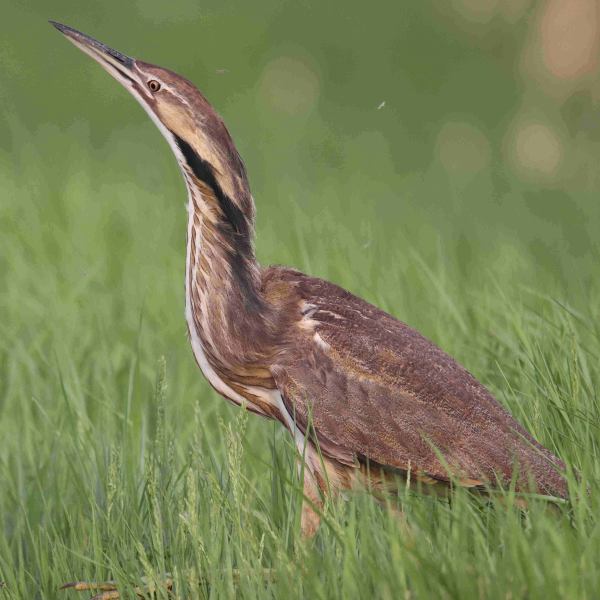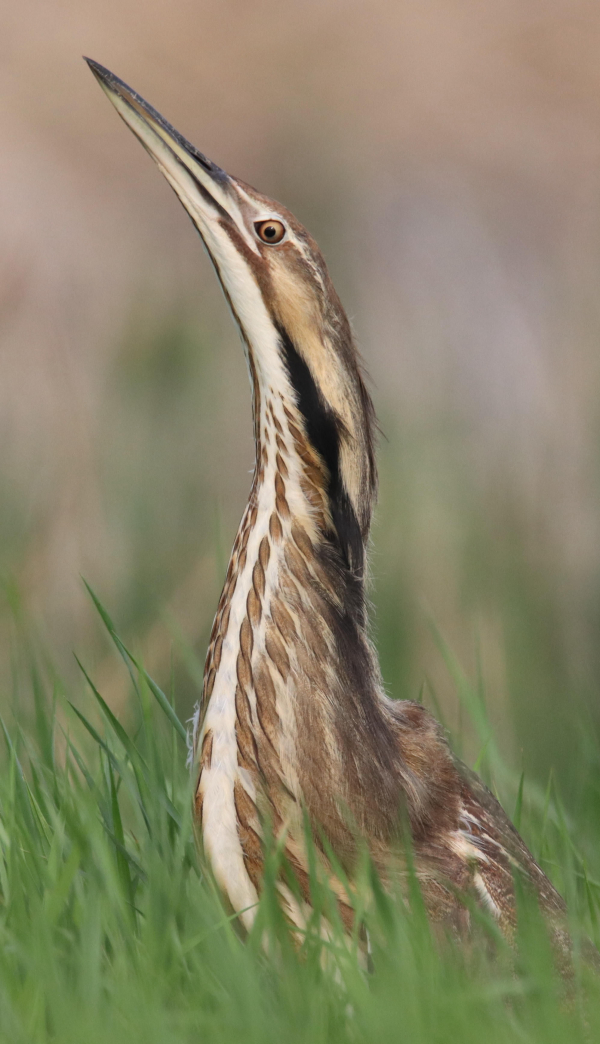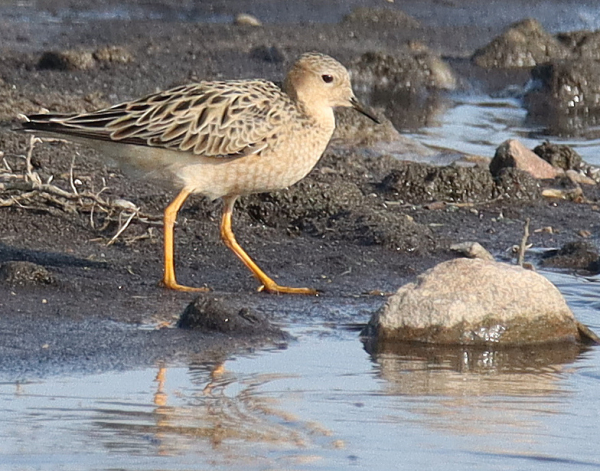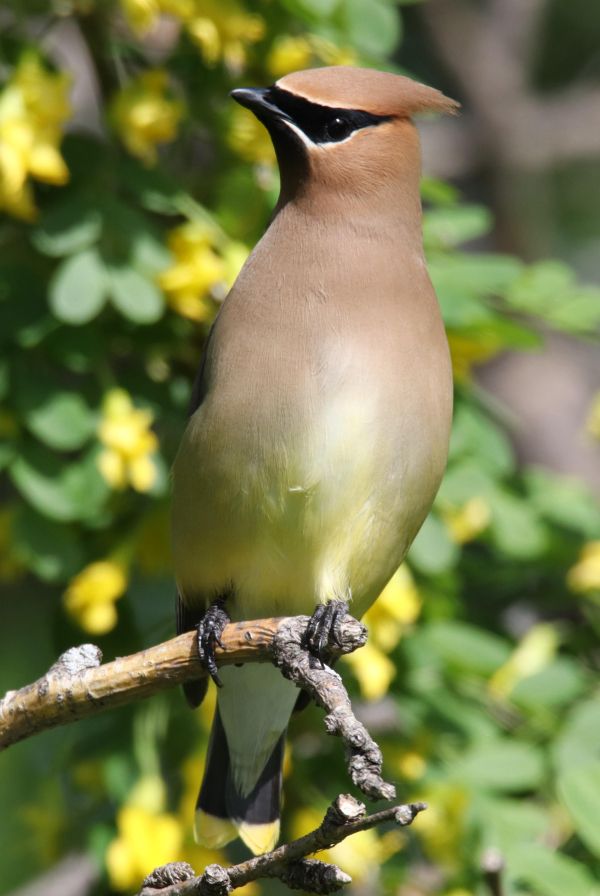 An American Bittern on the hunt provided a photo opportunities as it moved from one shallow marsh to another.  Only the second American Bittern sighted to date, these birds are usually quite common in the Prairie Pothole Region.  The prize of the week was the chance to observe and photograph rarely encountered Buff-breasted Sandpipers during a migration stopover between southeast South America and far northern Canada.
 Although only documentary photos were possible, the Buff-breasted Sandpipers represented the first sightings by our editor in a couple decades.  Always attractive, Cedar Waxwings were the most recent, and possibly among the last migrating songbirds to stopover at Melody
|
